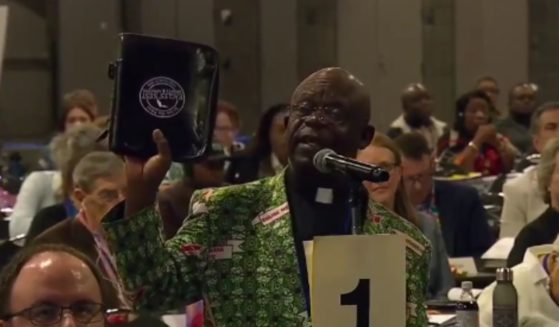Libs Loved China's CO2 Cap-and-Trade Program, Turns Out It Was Lie
China’s much vaunted plan to fight global warming with a cap-and-trade system doesn’t seem to be living up to the hype.
China announced its plan for a carbon dioxide emissions trading market in December 2017 as part of its commitment to the Paris Agreement, but the government released almost no details about the plan.
It only added to claims that China had supplanted the U.S. as a leader in fighting global warming. Even former Vice President Al Gore hailed China’s cap-and-trade plan as “another powerful sign that a global sustainability revolution is underway.”
Now, outside experts are getting more details about how “the world’s largest carbon market” will work — and they aren’t very impressed.
For starters, China seems to be following the European model for cap-and-trade that’s largely seen as a failure by outside observers.
“There is certainly a risk of repeating mistakes from the past,” Gilles Dufrasne, an analysis the group Carbon Market Watch, told E&E News.
Europe’s cap-and-trade program failed to make much of a dent in emissions trajectories because officials issued too many permits, which drove prices down. China seems to be moving forward with similar policies.
“It has already been determined that allowances will be distributed for free, with an output-based method using benchmarks,” Dufrasne said. “These benchmarks will decline over time, but the free allocation of credits is a major issue in the E.U. [emissions trading system], and the Chinese system is on its way to repeating this experience.”
When China first announced its cap-and-trade plans last year, American Enterprise Institute economist Derek Scissors told The Daily Caller News Foundation “it won’t matter at all for years, if ever.”
“As they often do, the Chinese are hoping that heavily subsidized state firms which can’t go out of business and must obey all government orders are magically going to respond to market incentives when the government wants them to, and only in ways the government wants them to,” Scissors said.
Environmental economist Richard Tol told TheDCNF that “China is just not ready for this” for a variety of reasons.
“The key problems with China’s cap-and-trade program is that they are not very good at measuring emissions and they are not very good at resolving commercial conflicts,” Tol said in December 2017.
“Cap-and-trade creates a legal right to emit, and turns this into a commercial property that can be bought and sold,” Tol said. “The regulator will need to compare the number of permits a company holds to its emissions.”
“The courts will need to intervene if someone sells fraudulent permits to someone else,” Tol said.
China’s CO2 market won’t be up and running until 2021, E&E reported, despite initial reports indicating it would begin as soon as this year. But E&E noted it would only be “simulated” emissions trading for the first few years.
Heavy industries will also be exempted from the cap-and-trade system until after 2025, which lines up with China’s unimpressive pledge to “peak” greenhouse gas emissions by 2030.
Despite the problems, environmentalists are not ready to give up on China. Green groups plan to continue working with the world’s largest emitter of carbon dioxide on its efforts to reign in emissions.
A version of this article appeared on The Daily Caller News Foundation website. Content created by The Daily Caller News Foundation is available without charge to any eligible news publisher that can provide a large audience. For licensing opportunities of our original content, please contact licensing@dailycallernewsfoundation.org.
Truth and Accuracy
We are committed to truth and accuracy in all of our journalism. Read our editorial standards.












